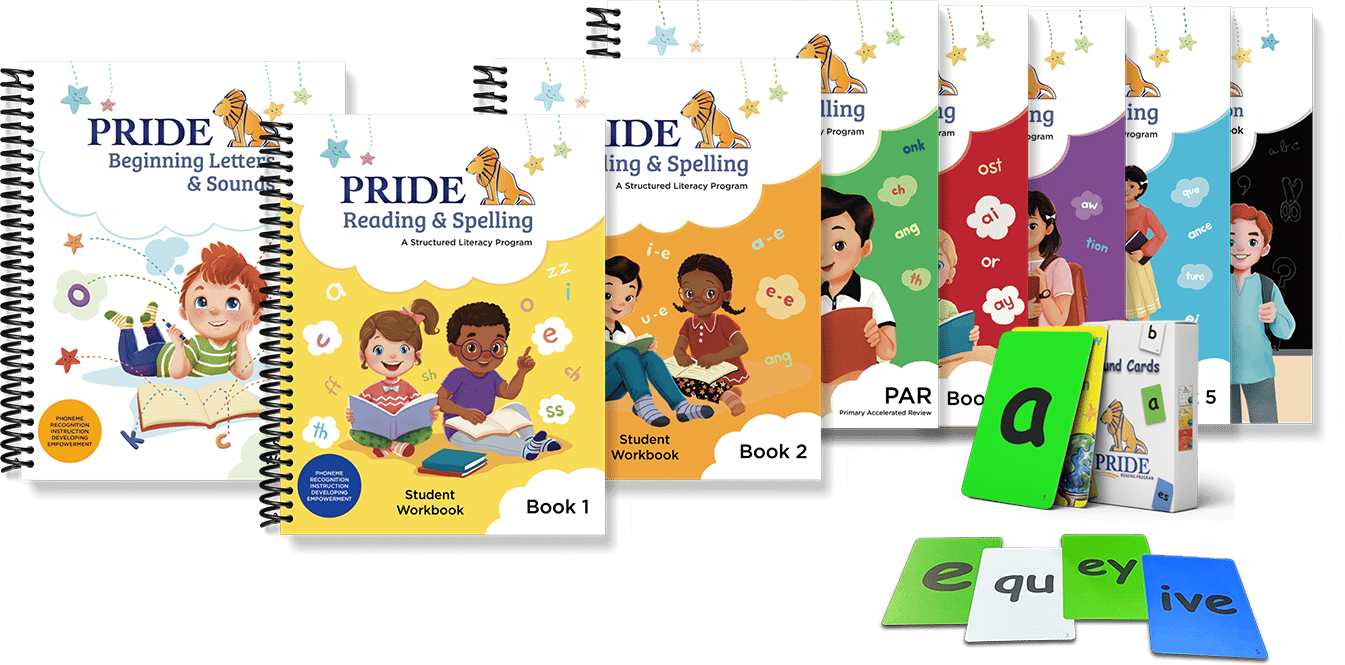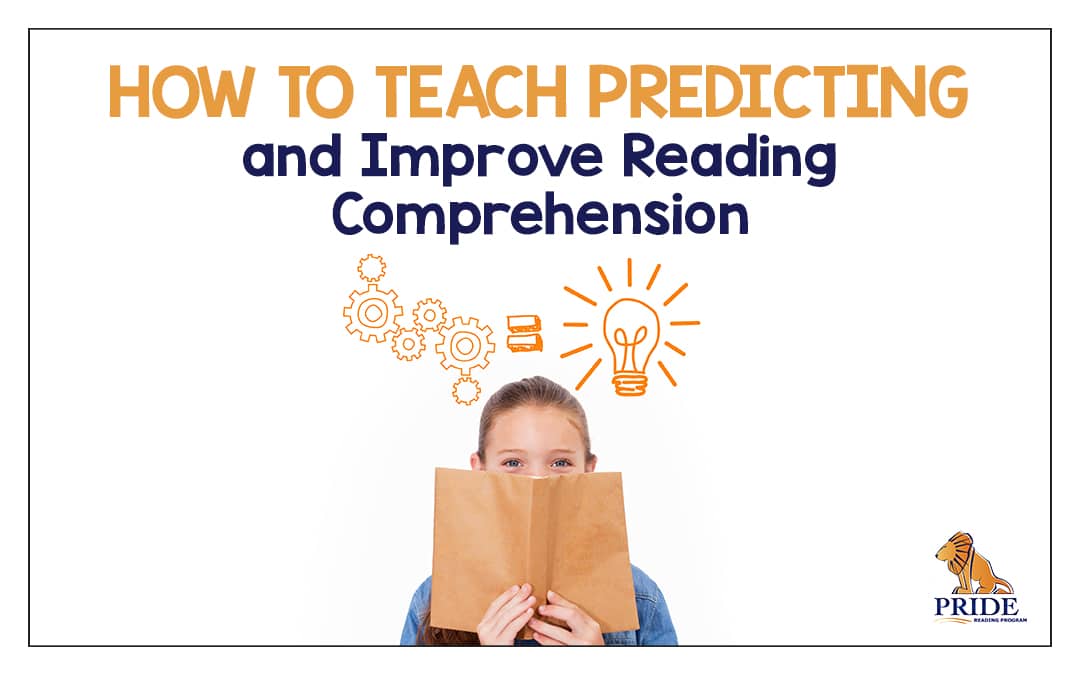There are so many skills that go into learning to read, but they all point to one ultimate goal: comprehension. The good news is, a student does not have to be a fluent reader in order to start learning good comprehension strategies. The even better news is that there is a huge body of research on the best practices for teaching reading comprehension, including this blog’s topic: how to teach predicting.
This is the second entry in our Comprehension Series. Click here to read our first post on sequencing.
What Predicting Is & How it Helps Comprehension
You probably are already very familiar with predicting: it’s just guessing what will happen next. Everyone uses predictions throughout their daily lives, including young children. But early and struggling readers need help learning how to harness the power of prediction during reading as a tool to monitor their understanding of what they’ve read–and then using that understanding to get a fairly accurate sense of what’s coming next.
Going back to our basic human nature, the simplified goal of predicting is to be correct. It’s a great survival tool, and to this day it’s very satisfying when something you predicted comes true. But getting good at making accurate predictions is tricky work. Students must know how to draw upon prior knowledge, which details to pay attention to, and how to revise their predictions as they get new information. When parents and teachers know how to teach predicting, they are helping young readers strengthen skills they need to higher-order thinking, and eventually critical reading!
Games to Strengthen Predicting Skills
Opposites
It might not seem obvious, but practicing opposites can help teach predicting. It helps students understand how words are related to each other, and how to use descriptive words to inform predictions. For a simple example, look at the title of the well-known book Alexander and the Terrible, Horrible, No Good, Very Bad Day. Students have to know all those adjectives are synonyms and mean the opposite of “good” in order to make an accurate prediction of what this book is about.
You can play the opposite game with your student for a few minutes whenever and wherever you want. Here’s how:
- Ask the student a question about a subject that has an opposite.
Ex: “What’s the opposite of light?”
- The student answers your question and then asks you a question in a similar manner.
Ex: “Dark. What’s the opposite of hard?”
- Once you answer the question, it’s your turn to think of a pair of opposites.
Ex: “Soft. What’s the opposite of on?”
- Continue until you can no longer think of a new set of opposites or as long as appropriate.
Predictions Throughout the Day
Encourage your student to make predictions about various parts of their day, but don’t stop there. Help your child verbalize why they are making a specific prediction. Here’s an example:
Teacher/Parent: What do you think you’re going to do after school today?
Child: Have a snack, go to soccer practice, and do my homework.
Teacher/Parent: What makes you think you’re going to go to soccer practice?
Child: It’s Tuesday and I have practice on Tuesday and Thursday.
Teacher/Parent: You don’t think it will be canceled?
Child: No, it only gets canceled if it’s raining, and it’s hot and sunny today.
Teacher/Parent: Great job using your weekly schedule and your weather observations to make that prediction!
How to Teach Predicting During Reading
Students need to be actively making and checking their predictions before, during, and after reading. The more helpful modeling and support they get early on with this skill, the more automatic and accurate their predictions will be as they tackle harder and more complex texts.
It can be hard for both young readers and the grown-ups reading with them to keep track of predictions, so writing them down is a great idea. Here’s a free chart to help you and your student make predictions, change them as you go, and analyze them.
>> Download Your Free Prediction Chart Here <<
Before Reading: The Preview
Predicting before reading is a lot like watching a movie trailer. You don’t know exactly what it will be about, but you can make some good guesses based on the information you are given in a short time. The preview information you and your student can talk about together includes:
- The title of the book: Help your student guess the topic, the name of the main character, and whether the book is fact or fiction from the title.
- The cover art: Talk with your student about what stands out to them on the cover, how that relates to the title, and make guesses about some W questions (who, what when, and where are a good start).
- The back of the book: If there’s a blurb on the back of the book, use it to try to answer those W questions. Take this a step further and ask the student why they’re making the specific predictions they are about the book. Guide them in using the text to make informed predictions.
- The first few pages of the book: Sometimes called a “picture walk,” leafing through a book and looking at some of the illustrations is a great way to get a sense of what the book will be about. Model how you are closely looking at illustrations and text features, ask predictive questions, and don’t worry too much about whether a child’s predictions are in line with yours.
During Reading: New Information, New Predictions
Because every person likes to feel right, having a prediction turn out wrong can be discouraging for a child. As you start reading, you can remind your student that they’re going to get new information as they read that might lead them to change their predictions. Each page is like a new clue for a detective.
Make sure to pause and go back to initial predictions during reading. Model how you may need to change your earlier predictions because of new information, or how you can now answer a question that you couldn’t predict. For example, “I wasn’t sure where this story would take place, but now I know that’s because the main character is traveling all around the world during the story.”
After Reading: Focus on the Process
As part of your post-reading discussion, talk with your student about how their predictions evolved as they read. When children first start to practice predicting, they haven’t had much time to build up their observational and critical thinking skills. Thinking about your own thinking (also called metacognition) is a very advanced cognitive process!
Again, it’s really important to avoid framing this part of teaching predicting as “Were your predictions right or wrong?” Instead, focus on how their predictions changed and evolved as they read. Point out any surprises or twists in the story, and how it can actually be really fun to have a story go in a different direction than you predicted.
Great Books for Predicting Practice
For teaching predicting during read-aloud time, try out these books! You may already have one in your home or classroom library:
What Do You Do With a Tail Like This?
**Links in these pages are affiliates, and if you go through them to make a purchase, PRIDE will earn a commission. Keep in mind that we link these books and products because of their quality and not because of the commission we receive from your purchases. The decision is yours, and whether or not you decide to buy something is completely up to you.** tell Stories Orally
There’s More to Comprehension Than Just Predicting!
Predicting is a critical skill in reading comprehension. However, any fluent reader knows there is much more to comprehension than just being able to figure out what might come next. That’s why we’ve chosen to create a four-part blog series and a webinar on how to teach some of the most important comprehension skills. Check out our first-ever webinar below!
Whether your students are just starting to read, struggling to read, or are great at reading but never seems to do as well as they could on comprehension tests, these teaching tips, fun games, reading activities, and videos will help you help your student strengthen their comprehension abilities as they work to develop their other reading skills.
Did you know that PRIDE Reading Program offers a Workbook just for comprehension? It’s designed for students in the Purple or Blue books who could use extra support with sequencing, predicting, visualizing, and inferencing. It’s also a great option for students who are on grade level with reading, but seem to have trouble remembering or discussing what they just read.
Please don’t leave without checking out the PRIDE Reading Program. The PRIDE Reading Program is an Orton-Gillingham curriculum that is used by teachers, tutors, and homeschooling parents worldwide with great success.


PRIDE Reading Program is a multisensory Orton-Gillingham reading, writing, and comprehension curriculum that is available worldwide for parents, tutors, teachers, and homeschoolers of struggling readers. The PRIDE curriculum uses research-based best practices to work for students of all ages and various learning modalities, and works for students with numerous learning differences and employs differentiated teaching practices. To learn more, email us at info@pridereadingprogram.com or visit the website at www.pridereadingprogram.com

